Os pós de níquel (Ni) estão se tornando cada vez mais importantes em várias aplicações industriais devido às suas propriedades exclusivas e versatilidade. Desde a manufatura aditiva e a impressão 3D até os revestimentos metálicos e a catálise, Ni puro em pó desempenha um papel fundamental em muitos processos de fabricação modernos. Mas o que é exatamente o pó de níquel puro e por que ele é tão essencial? Vamos nos aprofundar no mundo dos pós de níquel para descobrir seus usos, composição, características e benefícios.
Este artigo explorará todas as facetas do Ni puro em pó, fornecendo informações sobre seus tipos, aplicações, características e especificações técnicas. Seja você um cientista de materiais, fabricante ou amador, encontrará aqui informações valiosas que desmistificam esse poderoso material.

Visão geral do Ni em pó puro
O pó de Ni puro, ou pó de níquel puro, é um pó metálico produzido por vários métodos, como atomização, eletrólise ou precipitação química. Ele é altamente valorizado por sua excelente resistência à corrosão, estabilidade em altas temperaturas, condutividade elétrica e força. Essas propriedades o tornam indispensável em campos que vão da indústria aeroespacial à eletrônica.
O níquel é um metal de transição e faz parte do grupo do ferro, com notáveis propriedades magnéticas e condutoras. O pó de níquel puro, especialmente em sua forma ultrafina, oferece alta área de superfície e atividade, o que é essencial em aplicações de catálise e armazenamento de energia. Os pós de níquel estão disponíveis em várias formas, dependendo do tamanho da partícula, da forma, da pureza e dos requisitos específicos da aplicação.
Principais destaques do Ni em pó puro:
- Resistência à corrosão: O níquel resiste naturalmente à oxidação e à corrosão, o que o torna ideal para revestimentos.
- Propriedades magnéticas: O níquel é um dos quatro únicos elementos ferromagnéticos, o que significa que pode ser magnetizado.
- Tolerância a altas temperaturas: O níquel mantém suas propriedades mesmo em temperaturas elevadas.
- Condutividade elétrica e térmica: Ele oferece níveis moderados de condutividade elétrica e térmica.
Tipos de Ni em pó puro
Os pós de níquel podem variar significativamente em termos de composição, tamanho de partícula, forma e pureza. Abaixo estão alguns modelos específicos de pó de níquel puro que são comumente usados em aplicações industriais:
| Modelo de níquel em pó | Descrição | Tamanho da partícula | Formulários |
|---|---|---|---|
| Ni-101 | Pó ultrafino e esférico | 0.5-1 mícron | Eletrônicos, manufatura aditiva |
| Ni-201 | Pó de alta pureza com baixo teor de oxigênio | 2-5 mícrons | impressão 3D, revestimentos condutores |
| Ni-300 | Pó de níquel de grau padrão | 5-10 mícrons | Catalisadores, eletrodos de bateria |
| Ni-400 | Pó pré-ligado com ferro | 1-3 mícrons | Componentes aeroespaciais, revestimentos resistentes ao desgaste |
| Ni-500 | Pó de níquel eletrolítico | 10-15 mícrons | Chapeamento, moldagem por injeção de metal |
| Ni-600 | Pó de níquel em forma de flocos | 3-7 mícrons | Blindagem EMI, células de combustível |
| Ni-700 | Pó de níquel-carbonila | Sub-mícron | Eletrônica de ponta, cerâmica avançada |
| Ni-800 | Pó de alta densidade | 15-20 mícrons | Metalurgia do pó, ligas de revestimento duro |
| Ni-900 | Pó de nano-níquel | 50-100 nm | Supercapacitores, pesquisa de nanomateriais |
| Ni-1000 | Pó de níquel com liga personalizada | Varia | Aplicações especializadas em manufatura aditiva |
Legenda da tabela: Tipos e especificações de pós de Ni puro
Esses modelos representam uma pequena parte da variedade de pós de níquel disponíveis, cada um adaptado a casos de uso específicos. Dependendo de sua aplicação, a seleção do tipo certo de pó de níquel é fundamental para obter o desempenho desejado.
Composição de Ni puro em pó
Entender a composição do pó de níquel puro é essencial para determinar sua adequação em diferentes setores. Embora o componente principal seja o níquel, a presença de elementos residuais ou materiais de liga pode alterar significativamente suas propriedades. A tabela a seguir destaca a composição típica de vários tipos de pós de níquel.
| Grau de níquel | Conteúdo de Ni (%) | Teor de oxigênio (%) | Conteúdo de carbono (%) | Ferro (%) |
|---|---|---|---|---|
| Ni-101 | 99.9% | 0.05% | 0.02% | <0,01% |
| Ni-201 | 99.8% | 0.02% | 0.01% | <0,005% |
| Ni-300 | 99.5% | 0.1% | 0.03% | 0.05% |
| Ni-500 | 99.7% | 0.03% | 0.02% | <0,02% |
| Ni-600 | 98.5% | 0.5% | 0.1% | 0.1% |
| Ni-700 | 99.99% | 0.005% | 0.002% | <0,001% |
| Ni-800 | 99.0% | 0.4% | 0.05% | 0.05% |
Legenda da tabela: Composição de pós de Ni puro (por grau)
Pós de níquel de pureza mais alta (como Ni-700 e Ni-101) são frequentemente usados em eletrônicos de ponta e em aplicações sensíveis em que os contaminantes devem ser minimizados. Os pós de menor pureza, embora ainda sejam altamente funcionais, podem conter traços de elementos como ferro ou carbono, o que pode afetar o desempenho em aplicações específicas.
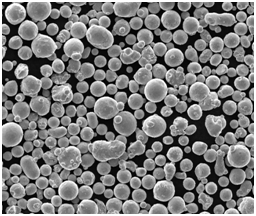
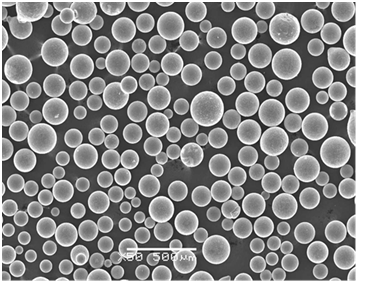
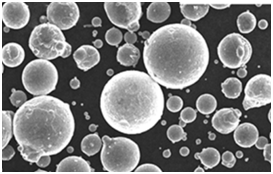
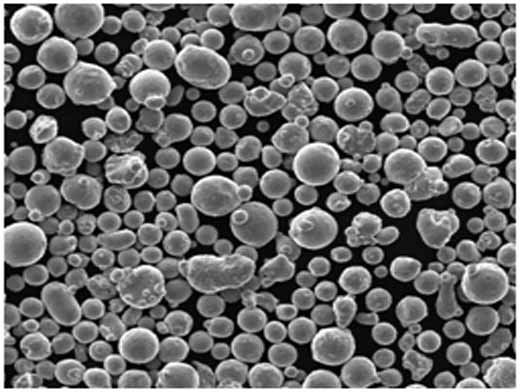

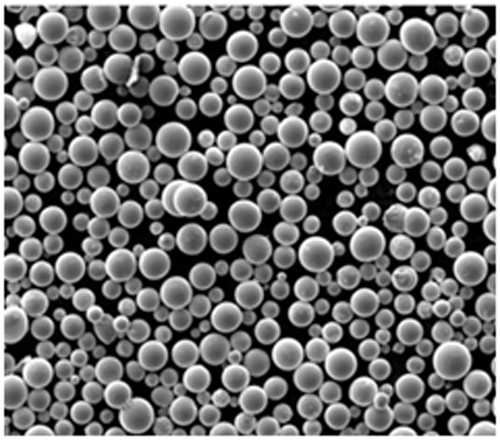
Características do pó de Ni puro
Quando se trata de escolher materiais, é essencial conhecer as características do pó de níquel puro. Veja a seguir algumas das principais características que diferenciam o pó de níquel puro de outros pós metálicos.
1. Resistência à corrosão
O níquel é naturalmente resistente à corrosão, o que é uma de suas características mais valiosas. Isso o torna altamente desejável em ambientes adversos onde os metais são propensos a enferrujar, como em aplicações marítimas, químicas e industriais. Em comparação com outros materiais, a resistência à corrosão do níquel’ é superior, o que o torna uma opção para revestimentos de proteção.
2. Propriedades magnéticas
O níquel é um dos poucos metais que são ferromagnéticos. Isso permite que ele seja magnetizado, o que o torna perfeito para uso em aplicações eletromagnéticas, como motores, transformadores e indutores. Quando comparado ao ferro, as propriedades magnéticas do níquel são um pouco mais fracas, mas mais estáveis ao longo do tempo.
3. Estabilidade em altas temperaturas
O níquel mantém sua resistência e integridade mesmo em temperaturas elevadas. Sua capacidade de resistir a temperaturas superiores a 1.400°C o torna ideal para aplicações industriais de alta temperatura, como turbinas a gás e componentes aeroespaciais. Em comparação com outros metais, como cobre ou alumínio, o níquel apresenta uma resistência térmica muito melhor.
4. Condutividade elétrica
Embora o níquel não seja o melhor condutor de eletricidade em comparação com materiais como cobre ou prata, sua condutividade moderada, combinada com outras propriedades, como resistência à corrosão, o torna altamente adequado para aplicações elétricas em que a longevidade e a durabilidade são as principais preocupações.
5. Área de superfície e reatividade
Os pós de níquel ultrafinos, especialmente os da faixa nanométrica, oferecem altas proporções de área de superfície em relação ao volume. Essa maior área de superfície aumenta a reatividade, tornando o níquel uma excelente opção para processos catalíticos, células de combustível e outras aplicações de energia. Em comparação com o níquel em massa, os pós de nanoníquel oferecem um desempenho significativamente maior em aplicações catalíticas.
6. Resistência mecânica
O níquel é conhecido por sua resistência e durabilidade, proporcionando uma força mecânica substancial. Na forma de pó, o níquel pode ser sinterizado em componentes resistentes para uso em vários processos de fabricação, incluindo metalurgia do pó e moldagem por injeção de metal.
Aplicativos de Ni puro em pó
O pó de níquel puro é usado em muitos setores devido às suas propriedades multifacetadas. Abaixo está uma tabela que mostra as diferentes aplicações e setores em que os pós de níquel são cruciais.
| Setor | Aplicativo | Por que o níquel em pó? |
|---|---|---|
| Aeroespacial | Componentes de motores a jato, lâminas de turbina | Estabilidade em altas temperaturas e resistência à corrosão |
| Eletrônicos | Pastas condutoras, baterias, materiais magnéticos | Condutividade elétrica, propriedades magnéticas |
| Automotivo | Conversores catalíticos, células de combustível | Catálise e reatividade |
| Indústria química | Catalisadores de hidrogenação, produção de gás sintético | Alta área de superfície e reatividade |
| impressao 3D | Fabricação aditiva de peças metálicas | Capacidade de personalização, resistência e durabilidade |
| Revestimento e galvanização | Revestimentos metálicos de proteção para resistência à corrosão | Propriedades anticorrosivas |
| Dispositivos médicos | Implantes, ferramentas cirúrgicas | Biocompatibilidade e resistência à corrosão |
| Armazenamento de energia | Eletrodos de bateria, supercapacitores | Condutividade elétrica e área de superfície |
| Moldagem por injeção de metal | Componentes de precisão | Resistência mecânica e durabilidade |
| Marinha | Hélices, bombas, válvulas | Resistência à corrosão em ambientes de água do mar |
Legenda da tabela: Aplicações comuns de pós de Ni puro
Especificações e padrões para Ni puro em pó
Ao selecionar o pó de Ni puro para sua aplicação, é fundamental entender as especificações e os padrões. A tabela a seguir detalha as principais especificações, como tamanho de partícula, pureza e padrões aplicáveis.
| Especificação | Faixa | Padrões aplicáveis |
|---|---|---|
| Tamanho da partícula | 0.5 mícrons - 50 mícrons | ASTM B330, ISO 4497 |
| Pureza | 98.5% – 99.99% | ASTM B330 |
| Densidade | 8.9 g/cm³ | ASTM B212 |
| Fluidez | 25 - 30 segundos/50g | ASTM B213 |
| Densidade aparente | 3.5 - 4,5 g/cm³ | ASTM B417 |
Legenda da tabela: Especificações e padrões para Ni puro em pó
Ao aderir a esses padrões, os fabricantes garantem qualidade, desempenho e segurança consistentes para várias aplicações industriais e científicas.
Fornecedores e preços de Ni puro em pó
A aquisição de pó de níquel puro de fornecedores confiáveis é fundamental para manter a alta qualidade do produto. A tabela a seguir apresenta uma visão geral de alguns dos principais fornecedores e suas faixas de preço.
| Fornecedor | Região | Produto | Faixa de preço ($/kg) |
|---|---|---|---|
| Vale | Global | Níquel eletrolítico em pó | $35 - $50/kg |
| Elementos americanos | EUA | Níquel em pó de alta pureza | $45 - $70/kg |
| Sigma-Aldrich | EUA/Global | Pó de nano-níquel | $300 - $500/kg |
| Tekna | Canadá | Pó de níquel esférico | $50 - $80/kg |
| Pós metálicos avançados | China | Pós de liga de níquel | $40 - $65/kg |
| Nanoshel | Índia/Global | Nano níquel em pó | $250 - $400/kg |
Legenda da tabela: Fornecedores e preços de Ni puro em pó
Os preços dos pós de níquel podem variar significativamente de acordo com a pureza, o tamanho da partícula e a localização geográfica. Para aplicações de ponta, como em nanomateriais ou dispositivos médicos, o custo pode ser substancialmente mais alto.
Vantagens e limitações do Ni em pó puro
O pó de níquel puro oferece uma série de vantagens, mas, como qualquer material, também tem suas limitações. Compreender essas limitações pode ajudá-lo a tomar decisões informadas sobre quando e como usar o níquel em pó em seus projetos.
Vantagens do Ni em pó puro:
- Resistência à corrosão: A capacidade do níquel de resistir à oxidação o torna perfeito para ambientes agressivos.
- Propriedades magnéticas: Sua natureza ferromagnética permite o uso em uma variedade de aplicações eletromagnéticas.
- Desempenho em altas temperaturas: A estabilidade do níquel em altas temperaturas amplia sua utilidade no setor aeroespacial e em outros setores que exigem resistência ao calor.
- Condutividade moderada: Embora não seja tão condutor quanto o cobre, o níquel oferece um bom equilíbrio entre condutividade e durabilidade, especialmente em ambientes corrosivos.
- Versatilidade: O pó de níquel puro pode ser usado em uma ampla gama de aplicações, desde o armazenamento de energia até a manufatura aditiva.
Limitações do Ni em pó puro:
- Custo: Os pós de níquel de alta pureza, especialmente aqueles na forma nano, podem ser caros.
- Condutividade mais baixa: O níquel é menos condutor em comparação com outros metais, como o cobre, o que pode limitar seu uso em algumas aplicações elétricas.
- Disponibilidade limitada de graus de alta pureza: Os pós de níquel ultrapuro (99,99%) podem ser difíceis de obter e podem exigir pedidos personalizados.
- Reatividade em formas finas: Os pós de níquel ultrafinos podem ser altamente reativos, o que pode representar riscos de segurança durante o manuseio e o armazenamento.
Legenda da tabela: Vantagens e limitações do Ni em pó puro
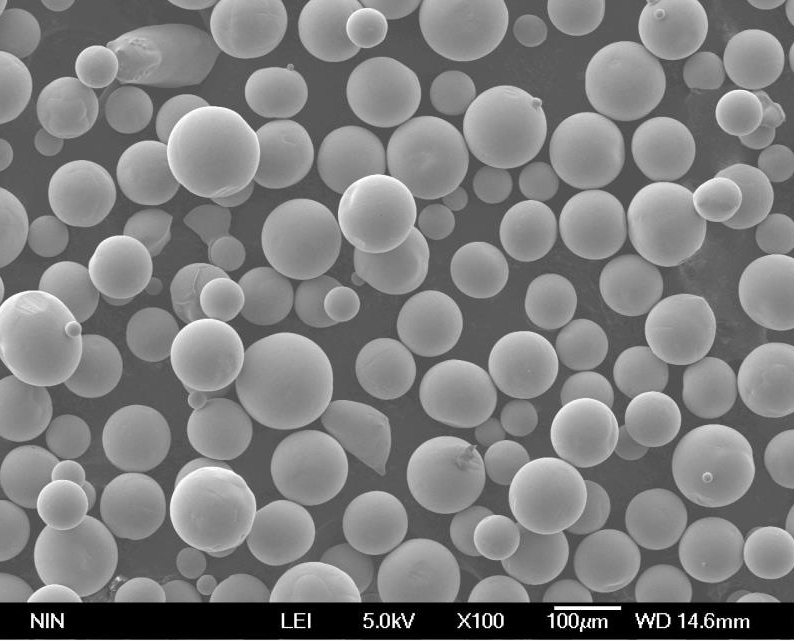
Perguntas frequentes
| Pergunta | Resposta |
|---|---|
| Para que é usado o Pure Ni Powder? | O pó de Ni puro é usado em várias aplicações, incluindo impressão 3D, eletrodos de bateria, catalisadores e revestimentos de proteção. |
| Como é feito o Pure Ni Powder? | Ele pode ser produzido por meio de métodos como atomização, precipitação química ou refino eletrolítico. |
| Qual é o preço do Pure Ni Powder? | Os preços variam de US$ 35 a mais de US$ 500 por quilograma, dependendo da pureza, do tamanho da partícula e da forma. |
| Quais setores costumam usar o pó de Ni puro? | Os principais usuários são os setores aeroespacial, automotivo, eletrônico e químico. |
| Quais são as propriedades magnéticas do pó de Ni puro? | O níquel é ferromagnético e pode ser magnetizado, o que o torna útil em aplicações eletrônicas e eletromagnéticas. |
| Como a pureza do pó de níquel afeta seu desempenho? | Os pós de níquel de maior pureza oferecem melhor resistência à corrosão e condutividade, enquanto os graus de pureza mais baixos são mais econômicos, mas podem ter usos limitados. |
Legenda da tabela: Perguntas e respostas comuns sobre o Pure Ni Powder
Em conclusão, Ni puro em pó é um material versátil que oferece uma ampla gama de aplicações devido à sua combinação exclusiva de propriedades. Esteja você trabalhando em um projeto de manufatura aditiva de ponta ou desenvolvendo novos catalisadores para o setor químico, o pó de níquel pode proporcionar o desempenho e a confiabilidade de que você precisa.
Compreendendo suas características, escolhendo o grau correto e considerando fatores como custo e confiabilidade do fornecedor, você pode aproveitar ao máximo esse material poderoso em seu trabalho.

